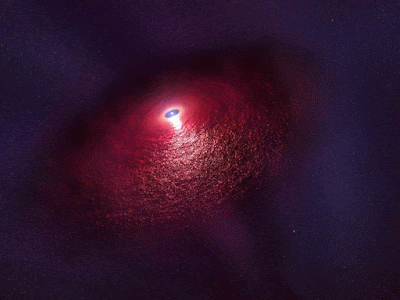Topics: Astrophysics, Infrared, Neutron Stars, Neutrons, X-rays
Space is filled with bizarre signals that we scramble to put meaning to — and now, researchers have detected yet another mysterious signal. This one emanated from near a neutron star, and for the first time, it's infrared.
So, what's nearby that could have created the weird signal? Scientists have a few ideas.
When a star reaches the end of its life, it typically undergoes a supernova explosion— the star collapses, and if it has enough mass, it will form a black hole. But if the star isn't massive enough, it will form a neutron star. [Supernova Photos: Great Images of Star Explosions]
Neutrons stars are very dense and, as their name suggests, are made up mostly of closely packed neutrons. Neutron stars can also be called "pulsars" if they are highly magnetized and rotate rapidly enough to emit electromagnetic waves, according to Space.com.
Typically, neutron stars emit radio waves or higher-energy waves such as X-rays, according a statement released by NASA yesterday (Sept. 17). But an international group of researchers from Penn State, the University of Arizona and Sabanci University in Turkey observed something interesting in NASA's Hubble Space Telescope data: a long signal of infrared light emitted near a neutron star, the researchers reported yesterday in The Astrophysical Journal.
This signal, they found, was about 800 light-years away and was "extended," meaning it was spread across a large stretch of space, unlike typical "point" signals from neutron stars that emit X-rays. Specifically, the signal stretched across 200 astronomical units (AU) of space, or 2.5 times the orbit of Pluto around the sun, according to a statement from Penn State. (One AU is the average distance from Earth to the sun — about 93 million miles, or 150 million kilometers.)
Weird Infrared Signal Emanates Across Space, But What Created It?
Yasemin Saplakoglu, Live Science

Comments